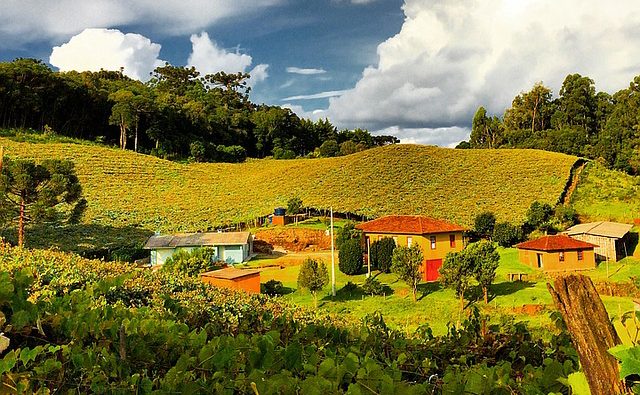November 22, 2017
Impact investor ECOTIERRA announced the launch of the Canopy Sustainable Land Management Fund (Canopy SLF) – a vehicle designed to back the development of ag and forestry projects in Latin America that will improve land management, triple small farmers’ incomes, protect forests, and lower carbon emissions by 20 million tons while generating significant return for investors.
With the support of two initial partners – Fondaction, a Québec-based investment fund for cooperation and employment -and Mirova, the affiliated management company of Natixis Global Asset Management, Canopy SLF is targeting a first close of $30 million and a full corpus of $50 million.
“The support of Mirova, co-proponent of the Land Degradation Neutrality Fund Project (LDN Fund project) and Fondaction in the development and creation of this fund, demonstrates the recognition of the know-how of our team and the credibility of our unique business model,” said Etienne Desmarais , president and co-founder of ECOTIERRA. “Today, I am even more proud, because this vehicle will initially allow to finance projects in Latin America, in partnership with small producers. These sustainable agriculture and value chain strengthening projects will have major socio-economic impacts for them and their communities, while having significant environmental impacts.”
Every year 12 million hectares of arable land and 7 million hectares of tropical forest are lost due to land degradation and deforestation – two of the most under-identified causes of climate change. This loss of land that is equal to half the size of Britain, carries a huge impact on society, the economy, and the environment, and Canopy SLF wants to engage smallholders as an impetus of change.
“The Canopy Fund is an exceptional showcase that will showcase Québec’s expertise in the fight against climate change around the world,” said Léopold Beaulieu, Chief Executive Officer of Fondaction. “Thousands of farming families in Latin America will prosper while improving the quality of their environment by supporting better land use techniques.Since the beginning of our operations, sustainable development has been at the heart of Fondaction’s raison d’être. We are proud to be part of this initiative, which contributes to the achievement of the United Nations Sustainable Development Goals.”
While striving for this change, ECOTIERRA also will manage Canopy SLF in a manner to achieve a 300 percent increase in smallholders incomes, but to also generate hundreds of millions of dollars of equitable premiums to be reinvested in their communities, and healthy returns for investors.
Integrating Impact
Assets tied into sustainable and impact investment strategies totaled $23 trillion in 2016 – a 25 percent increase over such assets in 2014, according to The Global Sustainable Investment Alliance. Today, socially responsible investments account for 26 percent of all professionally managed investments worldwide.
Meanwhile, Credit Suisse issued a report in October 2015 that concluded that the richest 1 percent of the world’s population held more wealth that the rest of the global population – pushing global inequality to a new all-time high. At the same time, food insecurity has risen for many despite advances in production leading to higher yields, urbanization and population rates continue to climb, and soil degradation and land scarcity continue to increase.
In the face of these shifts, impact and sustainable investing is seeing greater standing in the investment world.
“The interest in impact investing and these kind of opportunities among the clients we speak to actually far exceeds the supply of the available opportunities,” Simon Smiles, chief investment officer for ultra high-net worth individuals with UBS Wealth Management, told Reuters.
In the report Impact Investing in Sustainable Food and Agriculture Across Asset Classes released in May 2017, it was revealed that impact investment assets have seen a compounded annual growth rate (CAGR) of 32.5 percent since 2013, while allocation potential has expanded to include sustainable agricultural investments in farmland and forest management, real estate, cooperatives, food producers, natural resources, retailers, and agtech developers.
Furthermore, a report issued by the Global Impact Investment Network (GIIN) in 2015 found that of the total number of current active impact investment funds, 70 percent were launched after 2009, and in 2016, 89 percent of respondents to a GIIN survey responded that their funds were either meeting or surpassing financial expectations – reflecting the win-win nature of these investments.
-Lynda Kiernan

Let GAI News inform your engagement in the agriculture sector.
GAI News provides crucial and timely news and insight to help you stay ahead of critical agricultural trends through free delivery of two weekly newsletters, Ag Investing Weekly and AgTech Intel.




